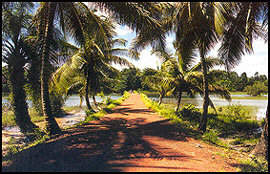 THE REPUBLIC OF GUINEA: FROM RAGS TO RICHES THE REPUBLIC OF GUINEA: FROM RAGS TO RICHES |

Guinea's history is characterized by a fierce desire to preserve its liberty and independence. The French colonization of Guinea by France lasted 60 years and finally by a referendum called upon on September 28, 1958 the Guinean people rejected to a large extent the Constitution project to make them a member of the French Community. The country hence, became on October 2, 1958 the 9th African country to become independent, and the 3rd in West Africa, after Liberia and Ghana. Guinea was admitted to the UN on December 1, 1958.
|
The young republic of Guinea under the rule of the Democratic Party of Guinea with President Ahmed Sekou Toure as its leader actively started the movement of African emancipation. Founding member of the Organization for African Unity (OUA, Guinea played a decisive role in the creation of the Economic Community of West African States (CEDEAO) on May 28, 1975 in Lagos. This community includes 16 West African member states, and is an important instrument for the economic integration in the region. After 26 years of a socialist regime, General Lansana Conte came to power, and was reelected in 1998 for another 5 years. |

